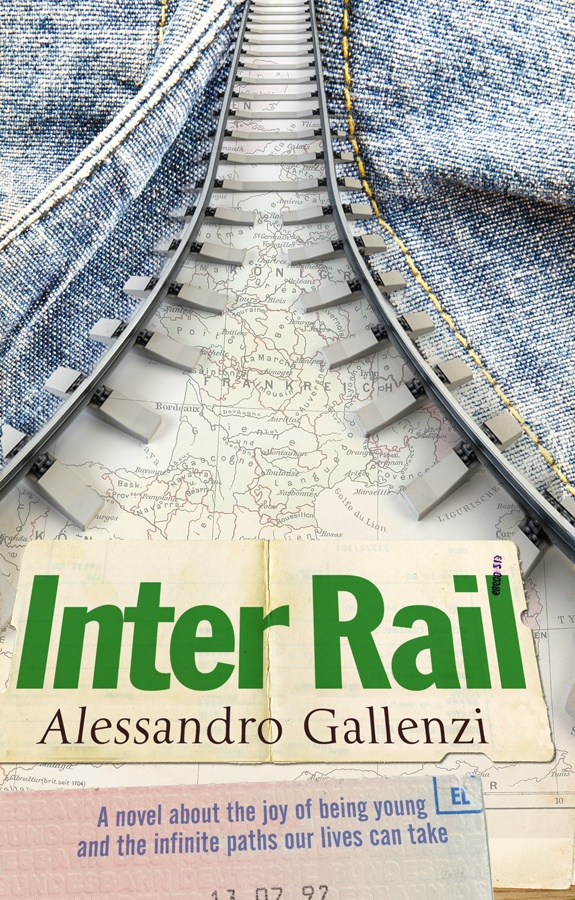When I was approached to review InterRail, I was ambivalent; I don’t normally review novels, but since this travel adventure book was:
A) based on the author’s experiences (as far-fetched as it seemed from the blurb), and
B) about train travel through Europe (something near and dear to me),
…I decided it was worth a peek.
What surprised me was how voraciously I read the book, enjoying unique twists and turns from the book’s structure to the main character’s outlandish travel adventures.
Synopsis
InterRail jumps into the middle of the action with its hero, Francesco – a 21 year old from Italy – using an InterRail pass to travel around Europe with nothing more than a change of clothes and some spare change in his pocket.
With an open mind and a few strange turns of events and chance encounters, Francesco is led through Europe on a whirlwind of adventure that conjures the phrase “flying by the seat of his pants.” In no particular order, he loses all his money, wins big money in Monte Carlo, hitches a ride in a Maserati and gets in car chases, falls in love, is attacked delivering “a package” to Amsterdam, stays in mansions and sleeps on park benches, and on and on the adventures go.
How it Reads
Despite the incredulous turn of events stretching what could believably happen in just a few weeks, I was quickly sucked into the plot and found myself doing what I most love with books: thinking about it even when I’m not reading, and eagerly waiting to get back to the book. Hence – it was a very easy quick read.
But…
My biggest criticism of the book is that despite its title, it has very little to do with trains, or InterRail other than the fact that Francesco has an InterRail pass and a certain geographic freedom that goes with it. Given my love of train travel and my own European train adventures during the Ultimate Train Challenge I had expected the book would have a lot more train-centric content.
Points for Structure
In contrast to my criticism, one of the things I liked most about InterRail is how the book starts partway through Francesco’s trip and doesn’t end when he returns to Italy – where his incredible adventures are still far from complete. In fact, about a third of the book is set in Italy, allowing the reader to see how Francesco’s travel experiences change his perspective and ultimately shape his life.
This is something so often overlooked in travel memoirs, but so very important – as many travelers experience a free fall of “reverse culture shock” in trying to re-assimilate and understand aspects of “home” that were once very familiar but no longer are, given the inner changes that travel inspire.
It also means that much of the backstory (including Francesco’s motivation to travel in the first place) is provided after his trip is done, which I found to be a very interesting – and effective – approach. In truth, travel adventures tend to continue long after any trip has finished.
How Travel Has Changed Over Time [Author Interview]
Although there’s a certain timelessness to InterRail, there are clues (from technology to currency references) that it is not set in the present day. In fact, InterRail is set during the summer of 1992, but the only reason I know this is because I chatted with the author, Alessandro Gallenzi:
“The book is loosely based on my first InterRail trip, which I did on my own, like Francesco, in the summer of 1992. The itinerary is the same, more or less, and many of the characters, adventures and scrapes are from real life.”
Nora: Travel was a different thing twenty years ago. Could somebody have a similar travel adventure as Francesco in this day and age?
“Although things have changed a lot in the last twenty years and the world has become more globalized, there are still great swathes of undiscovered territory even in Europe. Individual cultures, traditions and languages are still surviving – and you’ll see that if you avoid the most obvious touristic hotspots and travel around the various countries it is still possible to capture the uniqueness of each place.”
Nora: Do you think that traveling today is easier or more difficult?
“Much easier in a way (facilities and infrastructures are better, people travel more), but it’s a lot more expensive. I used to be able to travel inexpensively by night on overnight trains, and now they are discontinuing many of these services, replacing them with fast day trains for which you have to pay eye-wateringly expensive supplements.”
Nora: How have advances in technology helped or hindered our ability to have unencumbered travel experiences such as Francesco’s?
“I am not a technophobe, but thank God my life is not ruled by technology, so perhaps I am not the best person to ask, because I tend to use new technologies only when I see a real practical benefit, just in the same way as I use a washing machine or a dishwasher.
I’m not a gadget person, either, and I travel with a pre-historic mobile phone (which doesn’t tend to ring when I am away, as very few people know the number) and with no digital camera. I like to see, feel, smell and taste when I travel. I like to travel light.”
Indeed, traveling light (truly light, not fancy-techy-ultralight-with-expensive-gear-and-gadgets) is a bit of a lost art. Although I travel relatively light (everything I own fits into a small daypack and suitcase), the majority of my daypack is filled with technological gadgets: laptop, camera, iPhone, MP3 player, and a host of associated cords, accessories, and connectors).
And some days, I feel just as imprisoned by as liberated by these gadgets. InterRail reminds us of a time when travel was a little bit simpler, a little more organic, when people kept their eyes up and simply observed and interacted with the world around them.
And when you do that, it’s amazing what can happen.
I received a free copy of InterRail (published by Alma Books) for review. The opinions expressed in this post are my own.



